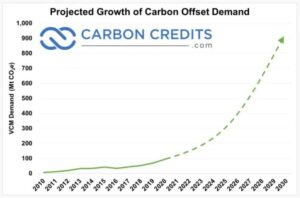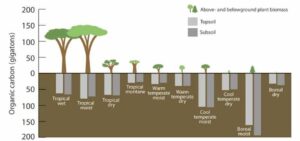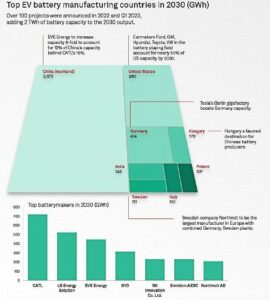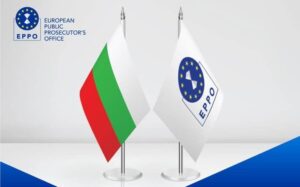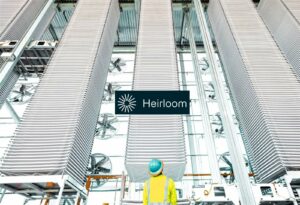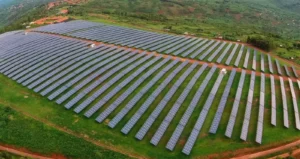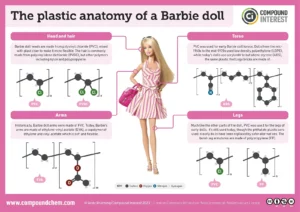For the first time in over half a century, the US has granted permission for a novel nuclear reactor, signalling a growing openness among regulators toward diverse methods of generating power from nuclear fission.
California-based startup Kairos Power secured a construction permit from the Nuclear Regulatory Commission (NRC) for its Hermes demonstration reactor in Tennessee.
In contrast to current commercial reactors that use water for cooling, Kairos’s technology employs molten fluoride salt as a coolant.
How Traditional Nuclear Reactor Works
The main function of the reactor centers on controlling nuclear fission, a process where atoms split and release energy.
Reactor fuel primarily contains uranium, processed into ceramic pellets and enclosed in sealed metal tubes known as fuel rods. These rods, often bundled together, form a fuel assembly.
A typical reactor core houses hundreds of these assemblies, varying with power capacity.
Within the reactor vessel, the fuel rods are submerged in water, serving as both coolant and moderator. The moderator slows down the neutrons generated by fission, sustaining the chain reaction. The heat generated by fission converts water into steam, driving turbines that generate clean electricity.
All commercial nuclear reactors in the U.S. are light-water reactors, employing ordinary water as both coolant and neutron moderator. Over 65% of U.S. commercial reactors are pressurized-water reactors (PWRs), circulating water under high pressure within the reactor core to prevent boiling.
Amidst the global drive to accelerate nuclear power deployment in the battle against climate change, regulatory processes have historically hindered the approval of new reactor designs.
According to Mike Laufer, Kairos Power’s CEO, the NRC has the potential to approve unconventional approaches. He also said in an interview that the regulatory pathway “doesn’t have to be a barrier.”
Kairos is one of numerous companies striving to market designs that can be manufactured in facilities and set up on-site. The company claims it to be swifter and more cost-effective compared to the conventional large-scale reactors available today.
How Kairos Reactor Technology Works
Kairos Power’s innovative reactor uses molten fluoride salt as a coolant, a departure from conventional water-cooled nuclear reactors. These salts have remarkable chemical stability and exceptional heat transfer capabilities at very high temperatures.
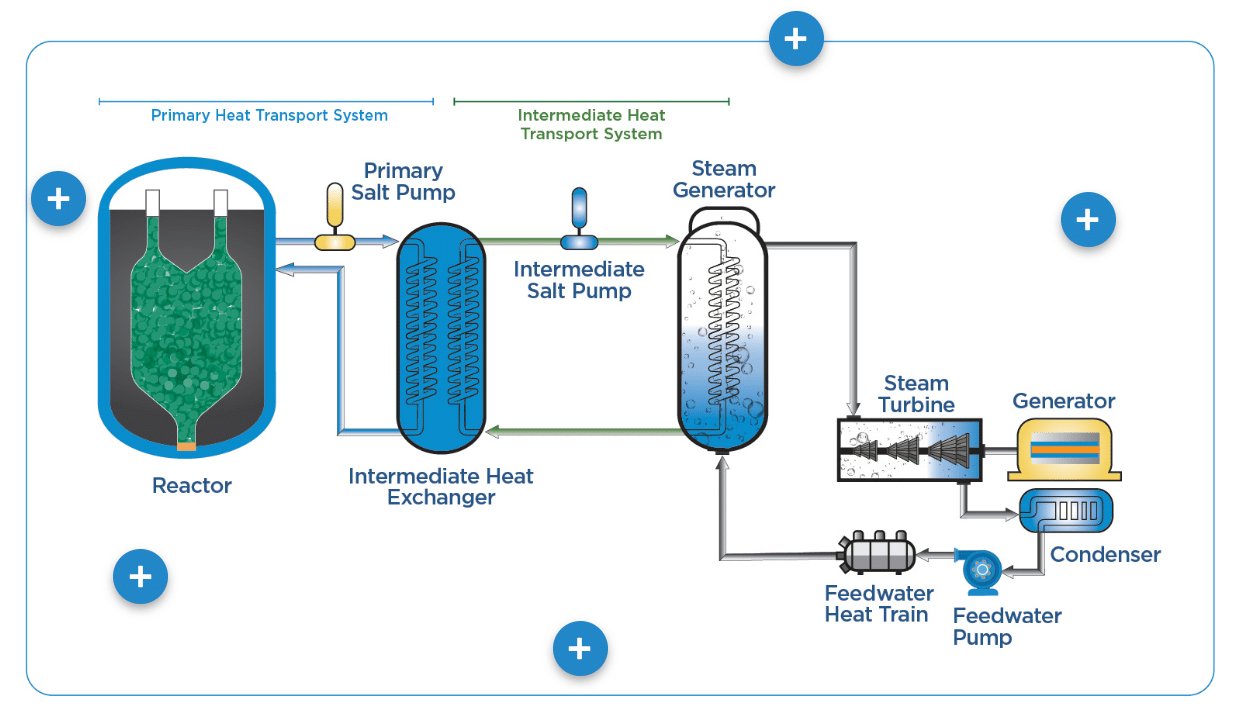

Studies conducted on U.S. reactor designs confirm the compatibility of molten fluoride salts with standard high-temperature structural materials. This is to ensure reliability and a prolonged service life, thus further enhancing commercial viability.
The reactor employs fully ceramic fuel that maintains its structural integrity even under extremely high temperatures.
The U.S. National Laboratories have successfully demonstrated fabrication and testing methods for these fuels.
By using pebble-type fuel, Kairos Power reactors enable online refueling for reliability and operational availability.
Moreover, the reactor adapts a model-to-learn approach to optimize the transition to clean energy. This adaptive strategy promises cost reduction while allowing development of innovative nuclear technologies that can revolutionize the global energy landscape.
Kairos advanced reactor is a type of small nuclear reactor (SMR). The International Atomic Energy Agency (IAEA) defines ‘small’ as under 300 MWe capacity. Present-day large conventional reactors typically boast around 1,000 megawatts of capacity.
The New Era of Nuclear Power
SMR development is taking place in Western countries with growing private investment. The involvement of these small investors indicate a significant shift happening from public-led and -funded nuclear R&D to private-led. The goal is to deploy affordable clean energy sources without harmful carbon emissions.
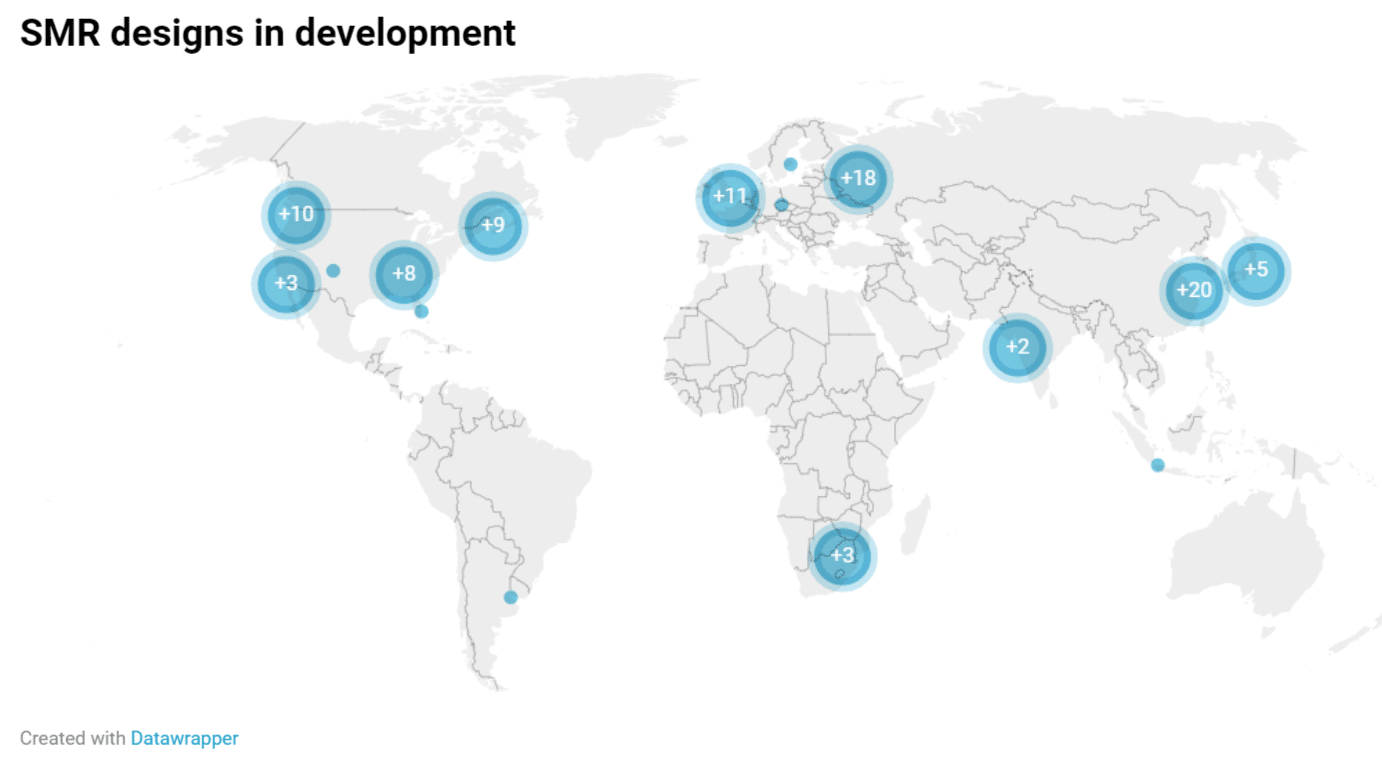

In 2020, the Department of Energy announced initial $30 million funding support for 5 US-based teams developing affordable reactor technologies. One of them is Kairos Power for their Hermes Reduced-Scale Test Reactor, a scaled-down version of its fluoride salt-cooled high temperature reactor (KP-FHR).
Kairos plans to begin construction on its $100 million initiative next year and anticipates completing the system by the end of 2026.
The objective is to showcase the viability of its design and the molten salt technology, potentially offering safety advantages over water-cooled systems. Laufer highlighted that the last non-water-cooled design approved in the US was back in 1968.
While Hermes itself won’t generate electricity, it’s considered as a precursor to the Hermes 2 project. This next phase would involve two similar reactors capable of producing a combined output of approximately 28 megawatts of electricity.
-
The NRC is currently evaluating the company’s application for a construction permit for this venture.
Kairos’s ultimate vision involves a commercial endeavor featuring two larger reactors with a capacity exceeding 100 megawatts. However, Laufer indicated that it’s premature to speculate on the timeline for developments beyond the initial Hermes plant. He further noted that:
“We’re developing a technology that will be highly scalable. Affordability is really about being able to scale up.”
With the recent regulatory approval for its Hermes demonstration reactor, Kairos ushers in a new era of cleaner, safer, and scalable nuclear power. This innovative approach holds promise for addressing climate change by leveraging efficient, affordable, and sustainable energy sources.
- SEO Powered Content & PR Distribution. Get Amplified Today.
- PlatoData.Network Vertical Generative Ai. Empower Yourself. Access Here.
- PlatoAiStream. Web3 Intelligence. Knowledge Amplified. Access Here.
- PlatoESG. Carbon, CleanTech, Energy, Environment, Solar, Waste Management. Access Here.
- PlatoHealth. Biotech and Clinical Trials Intelligence. Access Here.
- Source: https://carboncredits.com/novel-nuclear-reactor-gets-u-s-approval-after-half-a-century/
- :has
- :is
- :where
- $100 million
- $UP
- 000
- 1
- 100
- 2020
- 2026
- 28
- 300
- a
- Able
- About
- accelerate
- adaptive
- adapts
- addressing
- advanced
- advantages
- affordable
- After
- against
- agency
- Allowing
- also
- among
- an
- and
- announced
- anticipates
- Application
- approach
- approaches
- approval
- approve
- approved
- approximately
- ARE
- around
- AS
- Assembly
- At
- atomic
- availability
- available
- back
- barrier
- Battle
- BE
- begin
- being
- Berkeley
- Beyond
- both
- bundled
- by
- CAN
- capabilities
- capable
- Capacity
- carbon
- carbon emissions
- Centers
- Century
- ceo
- chain
- change
- chemical
- circulating
- claims
- clean
- clean energy
- cleaner
- Climate
- Climate change
- combined
- commercial
- commission
- Companies
- company
- Company’s
- compared
- compatibility
- completing
- conducted
- Confirm
- considered
- construction
- contains
- contrast
- controlling
- conventional
- Core
- Cost
- cost reduction
- cost-effective
- Current
- Currently
- data
- Defines
- demonstrated
- Department
- Department of Energy
- departure
- deploy
- deployment
- Design
- designs
- developing
- Development
- developments
- diverse
- down
- drive
- driving
- efficient
- electricity
- Emissions
- employing
- employs
- enable
- end
- endeavor
- energy
- enhancing
- ensure
- Era
- evaluating
- Even
- exceptional
- extremely
- facilities
- Featuring
- First
- first time
- For
- form
- from
- Fuel
- fuels
- fully
- function
- funding
- further
- generate
- generated
- generating
- Global
- Globally
- goal
- granted
- Growing
- Half
- Happening
- harmful
- Have
- he
- hermes
- High
- Highlighted
- highly
- hindered
- historically
- holds
- houses
- However
- HTML
- http
- HTTPS
- Hundreds
- in
- indicate
- indicated
- initial
- Initiative
- innovative
- integrity
- International
- Interview
- into
- investment
- Investors
- involve
- involvement
- involves
- IT
- ITS
- itself
- known
- laboratories
- landscape
- large
- large-scale
- larger
- Last
- leveraging
- Life
- Main
- maintains
- manufactured
- Market
- materials
- max-width
- metal
- methods
- mike
- million
- more
- National
- neutrons
- New
- next
- noted
- novel
- nuclear
- Nuclear power
- numerous
- objective
- of
- offering
- often
- on
- ONE
- online
- Openness
- operational
- Optimize
- ordinary
- output
- over
- pathway
- permission
- phase
- Place
- plans
- plant
- plato
- Plato Data Intelligence
- PlatoData
- potential
- potentially
- power
- precursor
- Premature
- pressure
- prevent
- primarily
- private
- process
- processed
- processes
- producing
- project
- promise
- promises
- R&D
- reaction
- reactor
- really
- recent
- reduction
- Refueling
- Regulators
- regulatory
- regulatory approval
- release
- reliability
- remarkable
- revolutionize
- s
- safer
- Safety
- Said
- salt
- scalable
- Scale
- Secured
- service
- serving
- set
- shift
- showcase
- significant
- similar
- slows
- small
- Sources
- split
- Stability
- standard
- startup
- Steam
- Strategy
- striving
- structural
- Successfully
- support
- sustainable
- Sustainable Energy
- system
- Systems
- taking
- teams
- Technologies
- Technology
- tennessee
- test
- Testing
- that
- The
- their
- Them
- These
- this
- Thus
- time
- timeline
- to
- today
- together
- toward
- traditional
- transfer
- transition
- two
- type
- typical
- typically
- u.s.
- ultimate
- unconventional
- under
- us
- use
- uses
- ushers
- using
- varying
- venture
- version
- very
- Vessel
- viability
- vision
- W3
- was
- Water
- webp
- Western
- while
- will
- with
- within
- without
- would
- year
- zephyrnet

